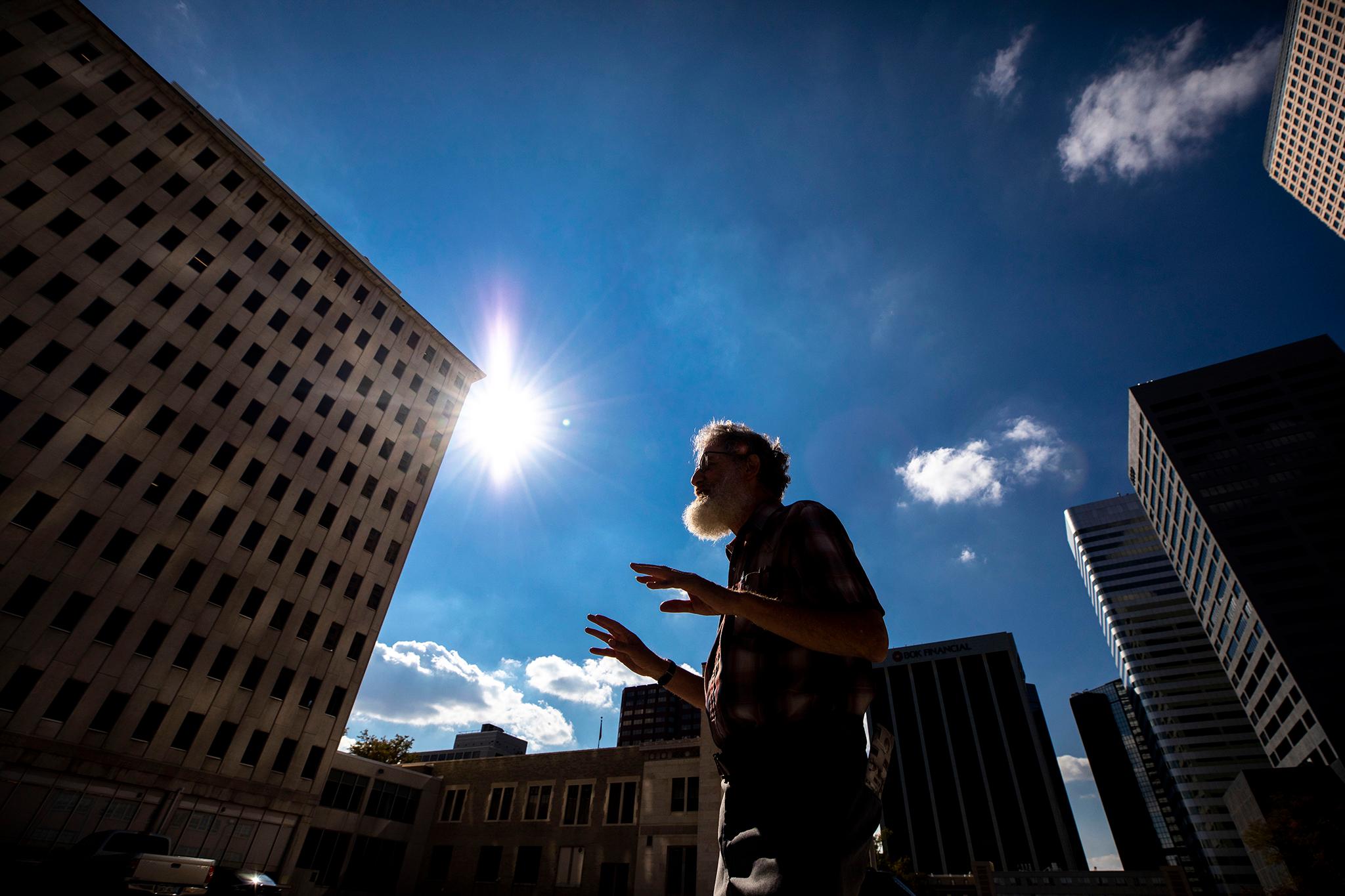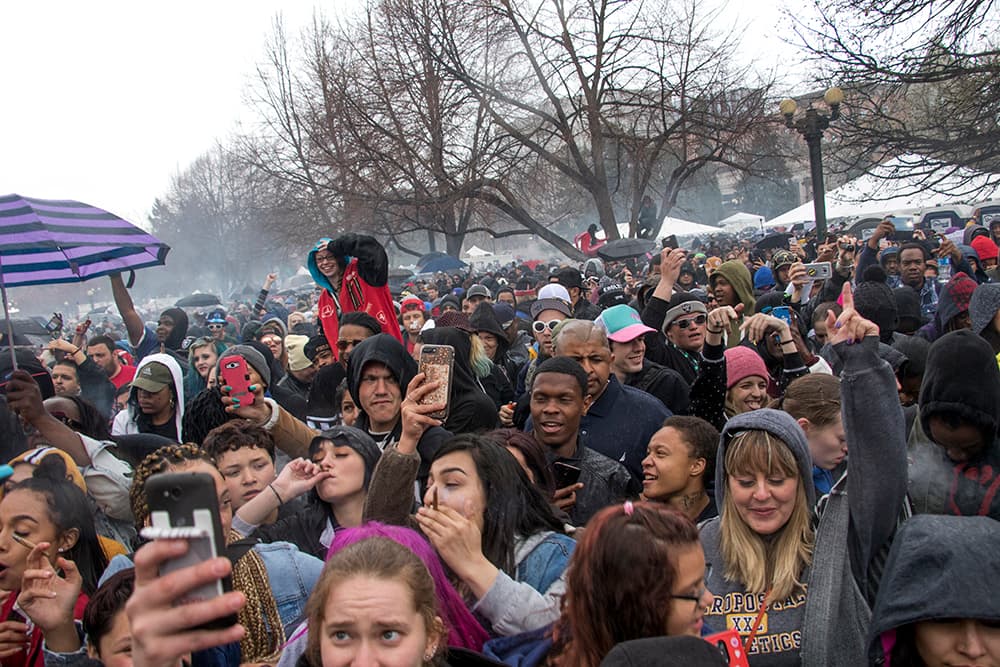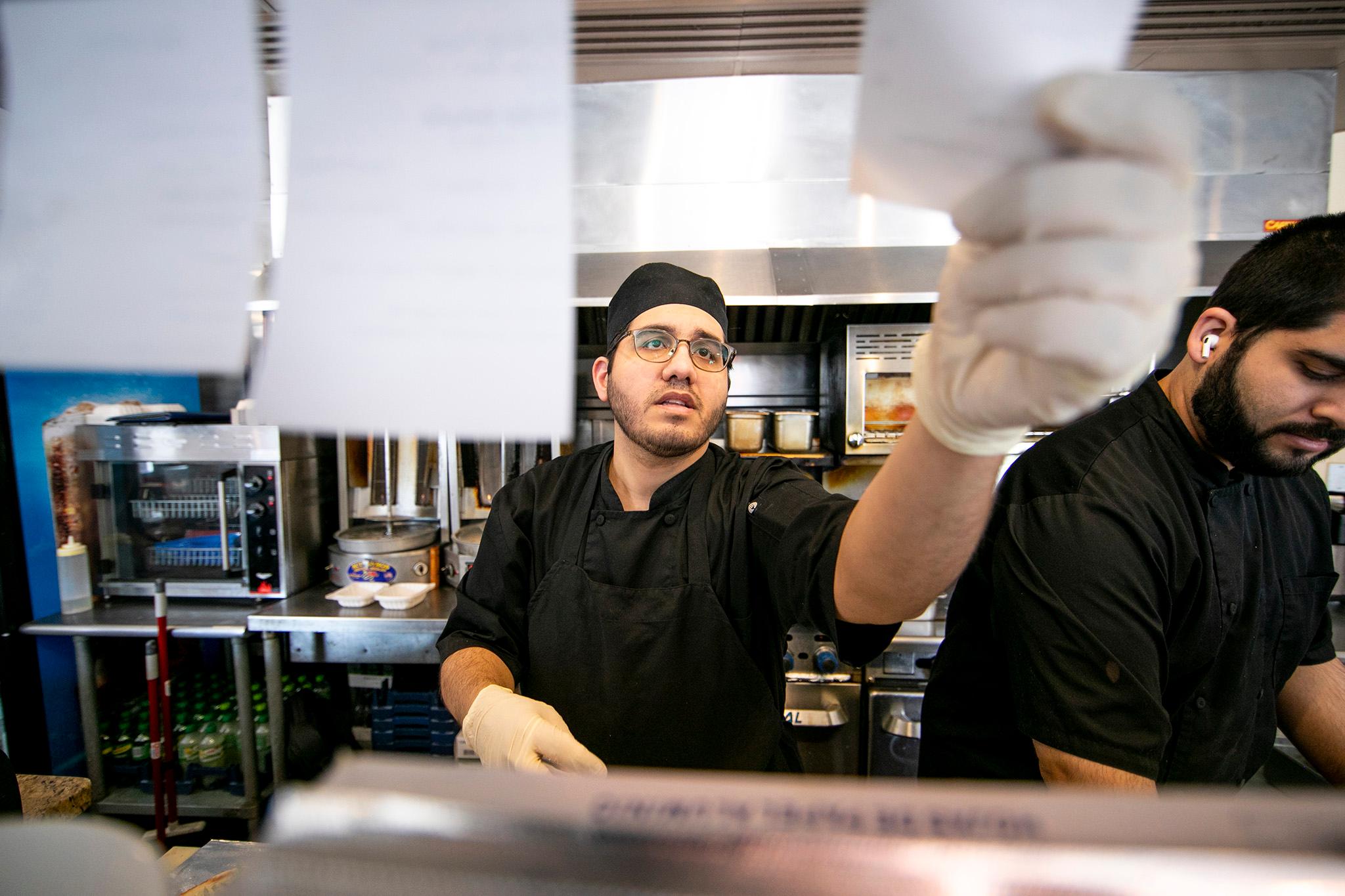Phil Goodstein has written more books about Denver history than there are miles in a marathon -- somewhere between 27 and 34. He's delivered hundreds of tours and talks around the city. And he still doesn't have a website where he's documented it all.
Goodstein may be tech-phobic, but he's no slouch when it comes to numbers.
He knows Denver's dates. He knows Denver's addresses. He cites the millions of dollars he claims Denver has wasted on "sham" public works projects.
So how could it be hard for him to pin down a number of books he's written?
"I can't count that high," he said.
Even with a list of titles, he has trouble figuring out how to tally them.
Should his recent hundred-plus page "total revision" of his "The Ghosts of Denver" count? Maybe. What about his Ph.D. dissertation "A Theory of the General Strike?" Hard no. Or the for-pay book called "The Lumber Baron Inn: Denver's Mystery Mansion?" He's uncertain -- but probably not.
The sheer quantity of his volumes, not to mention the intimidating length and obsessive details in many of them, makes figuring out how to navigate Goodstein's body of work tough. And it raises a question: Is there a right way?
As Goodstein tells it, there are many ways to read his works, and they are not necessarily written just to be read from beginning to end.
People should be guided by whatever interests them, he said. Many of his books are rich with subheadings and archival photographs designed to help people identify what they want to explore -- a surprisingly market-conscious approach for the historian with deep communist roots.
"People pick up the book, they start browsing, they get fascinated by the photos, and then they start being interested in the text," he said.

Early in his career, he took his first book, "Denver's Capitol Hill," which had abysmal sales, and reworked it as "The Ghosts of Denver: Capitol Hill" -- now one of his blockbusters. He wanted to capitalize on the ghost craze that had taken off in the city in the '70s and address the gap in supernatural stories.
While other haunted Denver books are brief and void of politics, he admits his isn't driven by sensational, spooky narratives.
Most of his books have been published under his imprint New Social Publications, and they're available in local bookstores and straight from Goodstein on his tours of Denver, his book readings and signings he hosts at his home. Several have fallen out of print.
In 2013, Goodstein published a guide to exploring his work.
It's called "Phil Goodstein's Denver History Index," which included a list of 21 titles he'd written since his first Denver history book back in 1988.
One problem: He's written many more since.
But the index gives history buffs a good starting point. If you're trying to figure out something about old Denver -- say, what's the deal with Jim's Pizzeria, the Derailer Bicycle Collective or the Denver Tramway -- he's probably mentioned it somewhere in the hundreds of thousands of words he's written -- and it's likely in the index.
That book is so detailed your address might show up there. And be warned: What you find might be upsetting. Perhaps an old Klansman lived at your home -- and perhaps he was your grandfather. Or a murder took place in the basement. Or he thinks it's just an architectural atrocity some greedy, hack developer built on top of a legacy building.
If a $34.95 index sounds like a bad investment, the highlight of that book is a collection of excerpts from his Naysayer newsletter.

In that newsletter, which Goodstein continues to send out today, he takes curmudgeonly swings at whatever power players are irking him at the moment -- scam artists, crooks, and buffoons, also known as mayors, City Council members, journalists and judges.
It's a dishy, leftist read, a look at Denver through the contours of Goodstein's lens that often depicts a city quite differently than the Denver Post and other dailies he believes are filled with "hype" and "boosterism."
A person looking for a fast, sweeping view of Denver history will be more likely to find it in the works of Tom "Dr. Colorado" Noel. And academics might turn to "Metropolitan Denver: Growth and Change in the Mile High City." Mayors tend to read the definitive work on mayors called "The Old Gray Mayors of Denver," and have little to say about Goodstein or his jabs on the office.
But still, how do you approach the full body of work?
For a comprehensive look at Denver history, from that perspective, he recommended starting with his "Denver From the Bottom Up" series -- a sprawling six volumes that take readers from the Sand Creek Massacre through Mayor Robert Speer's vision of a City Beautiful, through the era when the Ku Klux Klan ran the city and then the Depression, all the way to recent decades with the creation of the Denver International Airport and the city's current growth.
He then recommended people read his neighborhood books, studies of Park Hill, Five Points, the North Side, and South Denver.
And with Halloween upon us, his haunted histories might also make a timely read: "The Ghosts of Denver: Capitol Hill," "The Ghosts of University Park, Platt Park, and Beyond," "The Haunts of Washington Park," "The Lumber Baron Inn: Denver's Mystery Mansion" and "The Spirits of South Broadway." Just don't expect jump scares.
For those trying to understand the city's layout, they'd do well to read "Denver Streets: Names, Numbers, Locations, Logic."
Maybe skip "Exploring Jewish Colorado," which he said is his "worst book," because it was too much of an "official history."
"It was sort of sanctimonious, and they censored out some of the really good juicy stories of Jewish Denver, such as how there is this young Jewish woman, early 20s, from Long Island, who's hiding out from the FBI when she's on the 10 Most Wanted List, while serving as this super pious secretary at an Orthodox Jewish girl's school."
So he wrote an alternative that's perfect for those looking for a dive into the city's scandal-rich past: "The Seamy Side of Denver: Tall Tales of the Mile High City."
For those wondering about all the iconic buildings in Denver that have been razed, they should try "The Denver That Is No More: The Story of the City's Demolished Landmarks."

His most recent book is "Schools for a New Century," the third volume in his trilogy on the history of Denver Public Schools, in which he takes on big themes like discipline, the district's longstanding obsession with testing, corporatization of education, and even an entire chapter on "Embarrassment."
"My view with the schools is, believe it or not, extremely radical, which is that schools reflect the community. Insofar as you have a community that is contemptuous of learning, of education, you are going to have a school system that is contemptuous of education itself," he said. "And over the past generation -- and there's nothing at all unique about Denver in this -- there has been increasing embrace of the factory model of education."
But recently, with the current school board, he's been happy to see it push for other models of education and to retreat from testing-based curriculum.
Not that he doesn't have his issues with the district's leadership.
"I have a feeling that the new school board is trying to show it is just as incompetent as the old school board," he said. "That leads to the old Mark Twain observation: 'In the beginning God created idiots, but that was only for practice. He then created school boards.'"
So what is Goodstein's reputation?
Multiple Denver politicians had nothing to say about Goodstein when asked. Nor did pundits, school leaders, or other city brass. Even historians ignored requests to discuss his legacy.
City Cast Denver Lead Producer Paul Karolyi interviewed Goodstein extensively for the podcast "Changing Denver."
"I love Phil Goodstein," Karolyi said. "I think he's a vastly underappreciated expert on all things Denver and somebody whose work and expertise has been misinterpreted."
Too often, said Karolyi, Goodstein is cast as the "spooky historian," because of his haunted history tours.
"Well, that's not where his passion is," Karolyi said. "If you talk to him for 10 minutes, you know this guy is a staunch leftist in the classical Roosevelt sense. He will just rail on liberals, conservatives, anyone he disagrees with. And that's the Phil that I know and that I really, really like."
Yet too many people aren't aware of his work -- other than, maybe, his book on Denver's street names, which is among his shortest.
"I don't know if the average Denverite is aware that he exists," Karolyi said. "I think the people who know him know him as someone who's very detail oriented and gets a lot of facts down. That's what his books are. It's mostly not interpretation. It's just the facts of the situation."
Looking back at what he's learned writing so many books, Goodstein views Denver as a city confused about its identity.
"On the one hand, it wants to be content with itself as a nice place to live, a beautiful physical setting," he said. "People come out here deliberately to get away from the rat race, the idiocy, the noise, the crowding of the West Coast, the East Coast.
"On the other hand, Denver has this inferiority complex that it constantly wants to be more like Los Angeles or New York," he continued.
As he tells it, the city has "a strong carpetbagger tradition here, where people come out and immediately take charge. In fact, a lot of leadership of Colorado -- John Hickenlooper, Michael Bennet -- stand out as examples of these people that aren't part of Denver, have no understanding of the Denver fabric itself, but again, through political skill, economic power, have been quite successful in gaining political office."
We reached out to both Hickenlooper and Bennet for comment. We'll update if we hear back.

But newcomers aren't the only people who live here -- and he wants to make sure people remember that.
At a recent gathering at the Denver Art Museum that he described as "bourgeoise" and a "pep rally," he was honored as an alum of East High School. At the gala, he described his alma mater as "Beast High School" to current students' amusement.
There he saw some of these old-timers, some of whom he has written about. There was the "slumlord" descendent of a local candy empire, a grandson of the founder of a leading press, and many other old Denverites willing to share their memories.
But not everybody who grew up here has wanted to stick around -- including Goodstein, in his early days. He left Denver to study Eastern European History and labor, which didn't work out.
"A lot of people, once they have grown up in Denver, want to see the real world," he said. "They go out and do leave and don't return. Then there's the people like me that go away, try to see the big world, and fail and come back to Denver as home."













